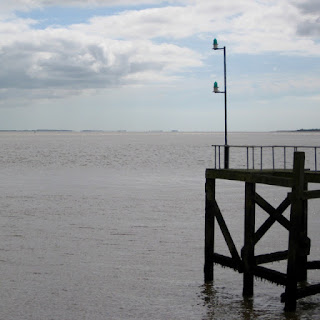Edward Balliol surveyed the countryside
of northern France and the estate that following his father’s death was now
his. It was charming but he longed for
majestic lochs, porridge and cold drizzle.
Plus he wanted a crown. His
father after all had been king of Scotland when the English had invaded in
1296. The young Edward had been taken as
a prisoner to England and confined there for eighteen years.
Meanwhile the Scottish crown landed firmly
in the formidable hands of Robert the Bruce.
However when Robert died it then passed to the far less daunting figure of
his five year old son, David I. Balliol
knew that now was his moment to pounce but he needed help. The River Humber would be the perfect launch
site for his invasion and, after a bit of pleading, the English king Edward III
gave him permission to use it.
Disaffected Scottish nobles made their
way to Hull, eager to enact revenge against the Bruce family. They gathered a huge convoy of 88 ships in
the Humber, the largest fleet ever recorded in connection with Hull. On 20 July 1332 it set sail for Fife. Initially all went smoothly and Balliol achieved
his dream of being crowned king. Admittedly
he wasn’t really a proper king as, in return for English assistance, Balliol
had promised to accept Edward III as his lord and acknowledge that he only held
the Scottish throne due to his benevolence.
This turned out to be true in reality as
well as on paper. By Christmas Balliol had
been forced out of Scotland by David I’s supporters and Edward III realised
that he would have to become more personally hands on if the campaign was to be
a success. The following summer the English king led a force to recapture
Berwick. Hull was asked to provide 60
men and regularly sent weapons and food up to the east coast to the troops. Overseeing operations was Hull’s first Mayor
William de la Pole, now the pre-eminent merchant in Hull as his brother Richard
had moved down to London.
Together Edward III and Edward Balliol
met with more success but Balliol’s throne was never fully secured and even the
hold he had did not come cheap. As the fighting
dragged on it cost the English king around £25000 a year, an amount he could
ill afford once war with France began in 1337.
Edward III eventually sought a compromise with David I and by the middle
of the century Balliol was retired with a pension and living in Wheatley near
Doncaster.
Photo: Looking down the river Humber towards Spurn Point.

No comments:
Post a Comment